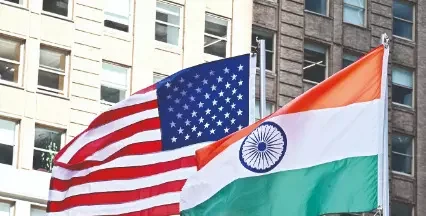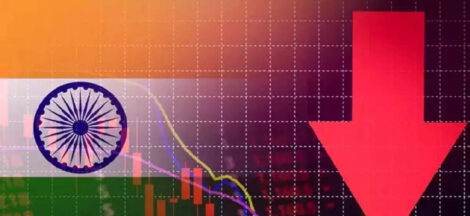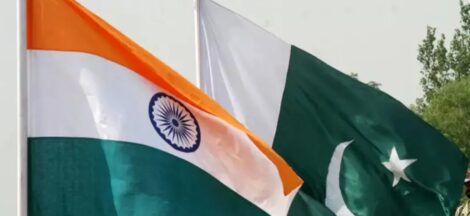NEW DELHI: Sanjeev Krishan, Chairperson, PwC India: “It’s possible to reach $1 trillion mechandise exports by FY29. The seeds have already been sown. Energy, semiconductors, EVs, battery storage…all structures are in place. We need to take macro-image-building to the micro-level. At trade fairs, India’s image dwarfs as compared to peers. We need to fix that too.” Sanjeev Krishan, Chairperson, PwC India
PwC India has projected that India’s merchandise exports may touch the coveted $1-trillion mark by FY29, if the country is able to “iron out” geopolitical conflicts and take actions along a “strategic pathway” in the coming years. This projection, however, considers an “optimistic scenario”, under which exports are assumed to grow at an annual rate of 18% till FY29.
In a report, titled “VIKSIT: An approach for India to achieve $1 trillion exports”, it cites two other scenarios too – “business as usual” and “conservative” assuming annual export growth rates of 14.5% and 10%, respectively, to achieve the $1 trillion-mark by FY31 and FY33.
The suggestions are made at a time India’s goods exports are facing headwinds due to muted growth in world trade, geopolitical issues, disruptions along key sea routes, and lack of incremental gains in export competitiveness in sectors allowing high value addition. In FY24, India’s merchandise exports shrank to $437 billion from $451 billion in FY23, with deeper contraction in labour-intensive sectors like textiles and garments. However, in some areas like electronics, the export pace has risen in recent years, although value addition is peripheral. At the same time, the country has been rather nimble-footed in market diversification.
Sanjeev Krishan, Chairperson, PwC India said that India’s rise to becoming the fifth largest global economy in nominal terms is mirrored by its increasing share in global trade, driven by a focus on export-led growth. “The VIKSIT framework can be leveraged over the coming years to enable a continuous dialogue on enabling competitiveness across the government and the private sector,” he said.
Krishan added that touching $1 trillion exports is possible by FY29 as the “seeds have been sown”, for that to happen. “Energy, semiconductors, EVs, battery storage…all structures are in place. We need to take the macro-building image to the micro-level. At trade fairs, India’s image dwarfs as compared to its peers…we need to fix that too.”
The report highlights five elements that need to be weighed while charting India’s export growth journey. While adding scale, India’s manufacturing sector also needs to improve its value addition ratio considerably to prevent “commoditisation of the exports basket” and ensure that exports move towards high value-added and emerging segments, the report said.
In addition to product diversification, it is critical to expand India’s market access to mitigate market concentration. “It is crucial to push forward on the revamped (free) trade agreement strategy to position Indian products competitively and reduce the burden of compliance and and ensure conformity with non-tariff barriers (NTBs),” the report said.
Also, a key factor for unlocking growth in exports rests with dormant micro, small and medium enterprises (MSMEs). At present, only around 1.36% of India’s MSMEs are exporting, the report revealed, in what shows the disconnect between exports growth and MSME’s propensity to internationalise. “Challenges along four key areas, namely business environment, export procedures, access to finance, and access to markets and information impact MSMEs’ ability to export,” the report said.
Further, it will be crucial to enhance and expand the impact of technology. “Technology fossilisation” has impacted export efficiency, product quality and unit production. “Advanced technology adoption in the Indian manufacturing and export sectors has been relatively slow, impacting the ability to cater to international market trends and demand,” the report noted.
While the efficiency of Indian ports has seen improvement in recent years, leading to a reduction in cargo turnaround time, this key enabling infrastructure needs further improvement, Krishan said. In 2023, the average turnaround time of containerised cargo from arrival at ports to vessel sail out was about 156 hours, of which about 19 hours were spent in customs processes.
For inland container depots, the turnaround time was estimated at nearly 128 hours, of which 32 hours were spent in customs processes. Thus, considering the growth in containerised traffic owing to exports growth, port authorities will need to envisage both capacity expansion and technology-led customs process enhancement, the report stated. Having storage and warehousing capacity right at the sea ports and airports would help cut logistic costs, Krishan said.
Meanwhile, on the production-linked incentive (PLI) scheme, Krishan said PLI as it stands today aims to increase exports from industries, which are already export-oriented, in a quicker way. There are many sectors where PLI is not adding much benefit, such as EVs, batteries. The PLI should be tweaked in a way that such sectors also benefit, and increase their share in exports, he said, adding PLI objectives could change from one sector to another.
Source: The Financial Express




 Banking Laws Bill Extends Tenure Of Cooperative Banks’ Directors To 10 Years
Banking Laws Bill Extends Tenure Of Cooperative Banks’ Directors To 10 Years 